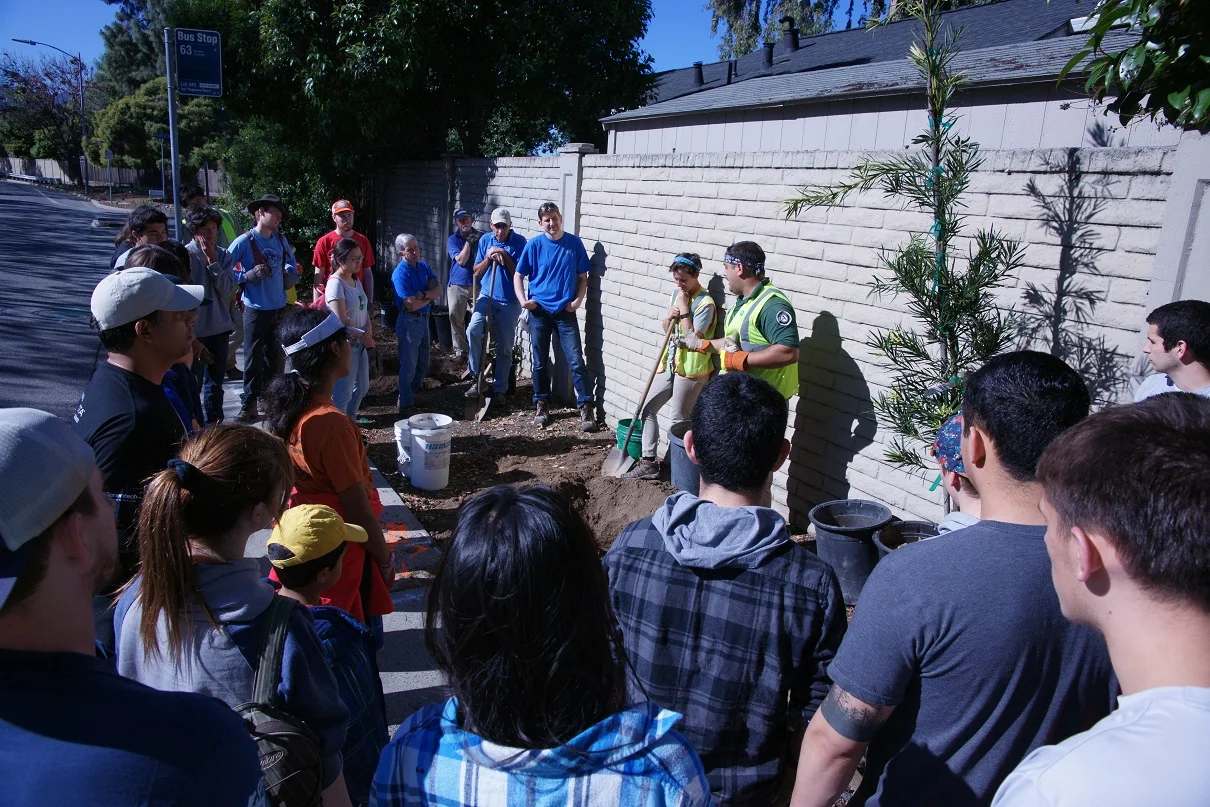Once a town in its own right and a steamship port that served San José when it was the capital of California, Alviso is now a community in San Jose of about 2,000 people. Alviso is overlooked by residents of the South Bay because of its location -- a pocket nestled against the southern end of San Francisco Bay without a major arterial passing through it. Another reason it may go unnoticed is that Alviso has avoided the development that is endemic to neighboring cities. That is to say, restaurants, hotels, condos, and tech companies sprout up around Alviso rather than in it.
However, if people took the time to turn off CA-237, and drive towards the Bay on either Gold Street or North First, they would find a historical community that is a pleasant change from the wholesale impatience that increasingly characterizes Silicon Valley. Alviso is dotted with historical markers that identify its old buildings, such as the Bayside Cannery (‘the third largest cannery in the United States by 1931”), the Union Warehouse and Docks, and the South Bay Yacht Club, which dates back to 1888. Lifelong resident José Ruiz puts it this way: “Alviso is calm and tranquil, yet lively.” He talks of the immediacy of nature in Alviso; the marshlands by the town are a major stop on the Pacific Flyway that brings large numbers of birds, and residents go to bed at night soothed by winds blowing off the Bay. Days in Alviso can have a festive vibe--José says he often hears banda and cumbia music.
Alviso also is an important ecological junction. The South Bay’s two largest rivers, the Guadalupe River and Coyote Creek, both flow into the Bay at Alviso. The Guadalupe River drains Almaden County Park and the Sierra Azul in the vicinity of Mt. Umunhum; Coyote Creek, which flows through the Don Edwards San Francisco Bay National Wildlife Refuge on the eastern edge of Alviso, drains the foothills of the Diablo Range enroute to the Bay. Residents have endured flooding from both rivers to devastating effect: Alviso ls on a floodplain that is 12 feet below sea level. Yet, it is the tidal marshland and bay that are more characteristic of the town than its rivers.
Diane R. Conradson, Ph.D. in Exploring our Baylands writes of the marshlands’ open space that borders Silicon Valley, but that it is not fully appreciated by its residents, “The salt marshes are a low and monotonous wasteland to many people. But nowhere else in the Bay Area is one able to see and feel so much space and solitude as in the vast stretches of marshlands.” This is especially true of Alviso, which is on the edge of immense space that is inhabited only by birds and native small animals. José points out that this vastness and the community’s distance from urban development, means less light pollution for Alviso than in neighboring cities and a darker sky with more visible stars. Noise pollution is minimal, too. The one exception is the Union Pacific Railroad whose tracks bisect the community on a levee facing the Bay.
Unfortunately, when land is viewed as a wasteland it is treated as such, particularly when it is a convenient backyard inhabited by no one. The east side of the Peninsula, from the South Bay to the Brisbane lagoon, long has been home to a string of municipal garbage dumps. Remediation is ongoing. At the same time Cargill, the privately held agricultural behemoth, created evaporation ponds for the harvest of salt by erecting dikes in the Bay. For years Cargill's processing plant in Newark has maintained a white mountain of salt that is visible to hikers on Bay trails across the water and commuters on the Dumbarton Bridge.
The nadir of San Francisco Bay in terms of pollution, garbage, and eradication of tidal wetlands for commercial development, happened in the 1960’s. Since that time, the Bay’s water quality has improved greatly, old-style landfills have closed, and wetlands are being protected. Most importantly, what once was considered a wasteland is now valued. A case in point is the public purchase in 2003 of most of Cargill’s property along the Bay. Led by Senator Dianne Feinstein, the deal secured 25 square-miles of wetland habitat for restoration.
Which brings us back to Alviso. Alviso is one of three areas that is being restored under the South Bay Salt Pond Restoration Project (the other two are Ravenswood in Menlo Park and Eden Landing in Hayward). The largest area is Alviso. To date, 2,600 acres of salt ponds outside of Alviso have been connected to create tidal marshland along with the establishment of 240 acres of shallow pond habitat and 12 nesting islands. More is to come, including additional flood protection for Mountain View and Alviso. The restoration of marshland itself affords some protection from flooding caused by storms and higher, climate change-induced Bay waters; the marsh acts like a sponge and absorbs water.
Diane Conradson’s comment on people dismissing a place because it isn’t sufficiently showy or entertaining is pertinent to Alviso. It has history, quiet, stars, wildlife, and an immense landscape adjacent to it. Even so, José, the lifelong resident of Alviso, says that “Alviso is more than just a nature area or a place to get away from city life. It is a home and peaceful community.”
Photography by Timothy Fillpot
Further Reading:
“Restoration project in Alviso…” San José Mercury News Article (2010)
“Exploring Our Baylands” Review and learn how to get a copy through SF Wildlife Society









